ARMS represents a step forward for Nintendo in a realm that it’s often stumbled in. With an array of multiplayer-focused titles like Mario Kart and Splatoon, ARMS is really the first that embraces some modern ingenuity and injects it with a sense of polish that few other games have mustered. Couple that with a colourful, engrossing fighter that’s both easy to understand but harder still to master, and ARMS is a captivating package and a worthy new IP to the Nintendo stable. Even if playing alone is still sorely lacklustre.
ARMS is pretty simple to grasp on a surface level. Its roster of quirky and varied character each have two (sometimes more) spring-like arms, which extend and retract with some time attached to them. At the ends are different types of gloves, or arms as the game confusingly calls them, which change up how your attacks are dolled out. Smaller arms move quicker but can be knocked out of the air by heavier, slower moving ones. Others have projectiles that extend your reach, while a whole other subset breaks up into multiple smaller attacks for a wider spread of damage.
Choosing which arms to use in a fight is often half of the battle, and can seem incredibly daunting at first. The options available are huge – especially when you start taking different elemental attributes into account. Some arms deliver electrifying damage to disable your opponent’s arms for a given time. Others feature area of effect explosive damage, while another might obstruct your opponent’s view for a set time so you can get heavy attacks in. Swapping and changing to find a combination that suits you is half of the fun, but it’s a little disheartening when you very clearly are outmatched in a fight purely because of your selection.
The fighters themselves add to this variation somewhat, but in more subtle ways. Each fighter has their own special ability that affects directly how you play out a particular match. Twintell, for example, can briefly slow down time as she charges up her arms for an attack. Ribbon Girl rules the air with her double jump, and Spring Man’s arms stay powered up if he’s dangerously close to dying. I found sticking to a handful of characters that supported my mostly aerial play-style to work the best, but it was always fascinating to see other players use characters I had tossed aside in particularly ingenious ways.
And that’s really where ARMS is at its best – against other human players. Simple one-on-one fights become a real test of patience and reflexes, but also an understanding of ARMS’ brand of pacing. It’s a sort of rock, paper, scissors affair – your blocks will stave off incoming punches, grabs will counter blocks and punches can knock grabs out of the air. Timing is crucial too, given that each of your attacks has a round time. Throwing out two punches in quick succession leaves you open to attack, so you better make sure they land. Alternatively, constantly blocking can lead to disabled arms, which just works against a good defensive strategy.
Matches then become a dance of sorts, with the opening moments used to see just how aggressive or defensive your foe is. Like any traditional fighting game, awareness is key here, and quite quickly I found myself reading player patterns and strategies easily. Although that works both ways, and several online opponents quickly found ways around me sticking in the air with jumps and dodges, and used my lack of blocking against me. ARMS constantly has me fine tuning the way I play, encouraging experimentation. It’s a pity then that it puts the ease of this behind some unfriendly barriers.
Each character starts out with three sets of arms, and the only way to unlock more is via in-game credits. Instead of simply purchasing them outright though, you’re forced to bet these credits on limited time score attack events. These events give you the chance to snag new arms by punching parcels out in a sort of arms firing range, but it’s still a bet in every sense of the word. Miss the shot, and you’ve just burned through credits for nothing. And with an average of one or two arms per character per short session, that’s a lot of grinding just to start really experimenting with the roster on hand.
Thankfully, every mode in ARMS rewards you with credits to burn. The limited Grand Prix single-player mode has you fighting through ten rounds with a character on increasing difficulties, but the lack of any real story makes it a stale addition to online play. Versus gives you the option to play with up to four friends in a variety of modes, either locally or online. There’re standard fights, Hoops (which has you using your opponent as a literal basketball), V-ball (an Arms-powered version of Volleyball), free-for-alls and a range of other smaller distractions in case the singularly focused fights aren’t enough.
This smaller mini-games of sorts act as decent palette cleansers between more furious fights, and they’re what makes Party Mode the most progressive online thing Nintendo has ever done. Here, groups of players are shuffled around different modes periodically, with the game automatically grouping and matching players according to the lobby size. Odd numbers might find themselves in free-for-all fights while another two square off more intimately. Or a group of four might team up against an AI enemy, while another four tee it off in a game of V-Ball.
It keeps the pace of battle interesting, but also features one of the most interactive lobby systems I’ve seen. Aside from being able to warm up with some target practice between matches, the entire Party Mode lobby system act as a hub of online fare. Bubbles around other players show off how their matches are going in real time, making you feel like a participant instead of just a random waiting player. It’s incredible to see this from the same company that didn’t allow you to changes weapons in a lobby of Splatoon, representing a monumental leap forward in online interfacing and understanding what constitutes and captivating lobby.
But when it comes down to it, ARMS is never better than when you’re simply fighting another person online. The team-based fights are a little too chaotic for the automatic enemy tracking and switching, and the fights devolve into messy affairs rather than calculated stand offs. Ranked play emphasises the strength of this fighter, pitting you against single opponents in arenas devoid of power-ups. Here your rank is solely based on your understanding of ARMS’ pace and your reaction to enemy strategies. The true test of your affinity, and easily the best way to really get better.
Ranked play is also where I started having trouble deciding how to play ARMS. Nintendo really wants you to use motion controls, and there’s a compelling reason to stick with it. Each Joy-Con gives you access to a respective arm, allowing you to throw punches very literally. You can then curve each arm individually to arc them, allowing you to get behind certain blocks and throw your opponent off-guard. It works incredibly well, with the tracking and responsiveness making it a fine choice as your staple mode of control.
Playing on a standard controller offers up its own benefits. Movement being mapped to a thumbstick is immediately more intuitive than tilting your Joy-Con from side to side, and I found it far easier to pull off more acrobatic dodges with this in mind. The concession comes in with attacks though. The same stick for movement also arcs your punches, but applies to both arms instead of independently. The nuance of breaking up your attacks in different directions is lost here, even if regular attacks feel more accurate in this mode. It’s something that will likely come down to personal preference, and spark heated debate as it did with Splatoon’s original release.
What can’t be disputed is just how stylish all of ARMS is. Its colours burst around every corner, breathing life into the character roster and imbuing fights with flashy effects and explosions of artwork. ARMS is visually appealing, but it’s the soundtrack that’s going to have you tapping a foot to the beat and sticking around an empty lobby for more than you should. Its theme song is infectious, but each stage features its own riff that’s bound to get as stuck in your head as it is in mine right now.
ARMS speaks to the style of game Nintendo is really nailing with its new IP, and represents another perfect understand of just what type of console it’s running on. Its single-player content is slightly lacking, but it’s going to be easy to look past that with the more engrossing fights happening on the incredibly robust multiplayer service on offer. ARMS is a stellar addition to the Nintendo library, and another win in the growing list of Nintendo Switch exclusives. And if the past is any indicator, updates will only improve that experience for months to come.
Last Updated: June 9, 2017
| ARMS | |
|
ARMS is another great new IP from Nintendo that shows their growing commitment to robust, competitive online games. Its elegant flow of fighting is supplemented by numerous options of continued experimentation, with a strong suite of game types to keep you playing for hours on end.
|
|
|---|---|
| ARMS was reviewed on Nintendo Switch | |
|
77 /
100
| |

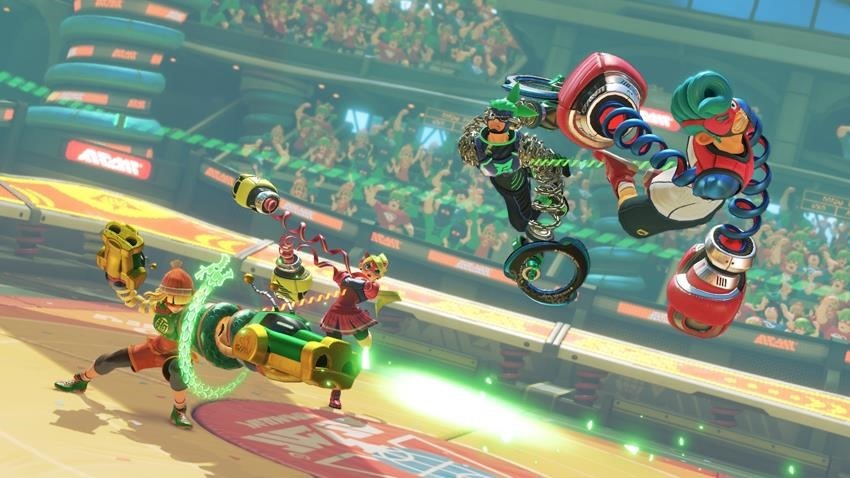


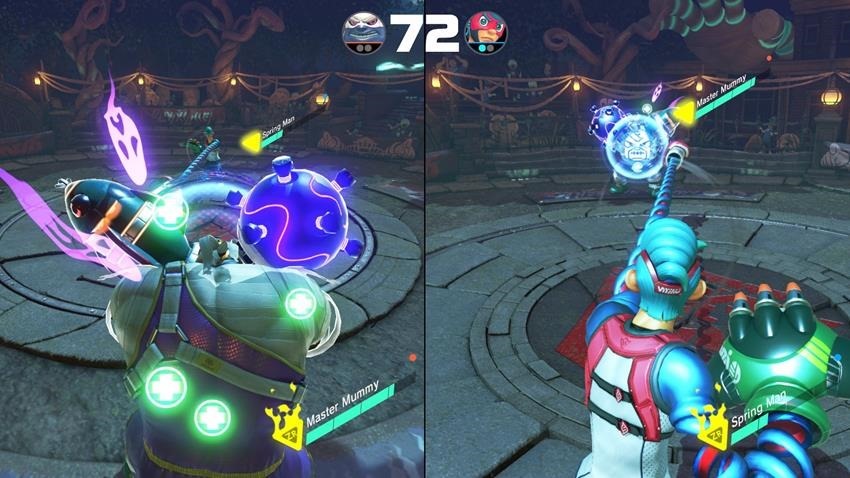
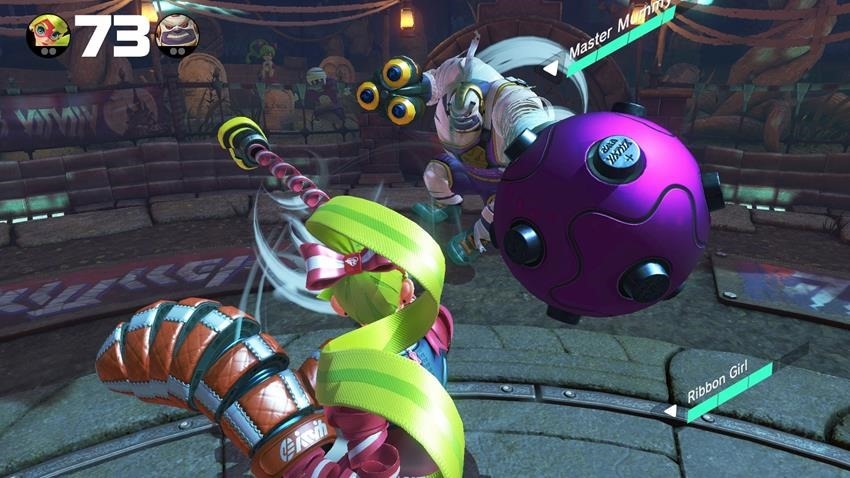
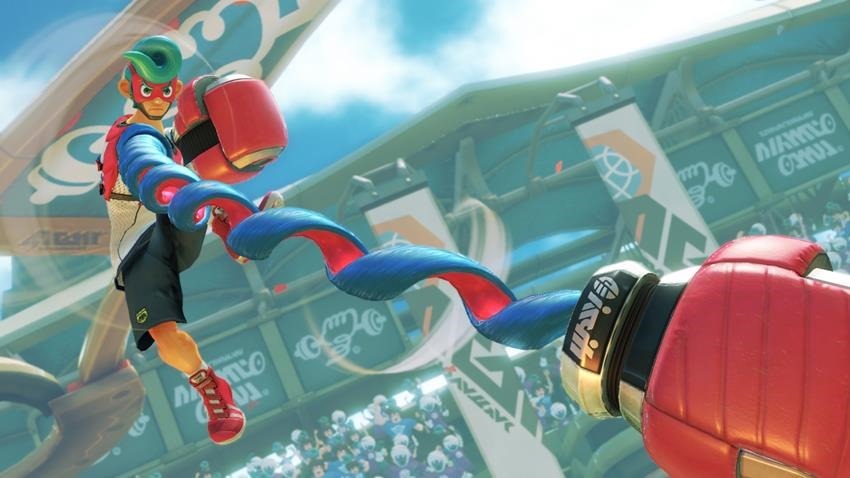

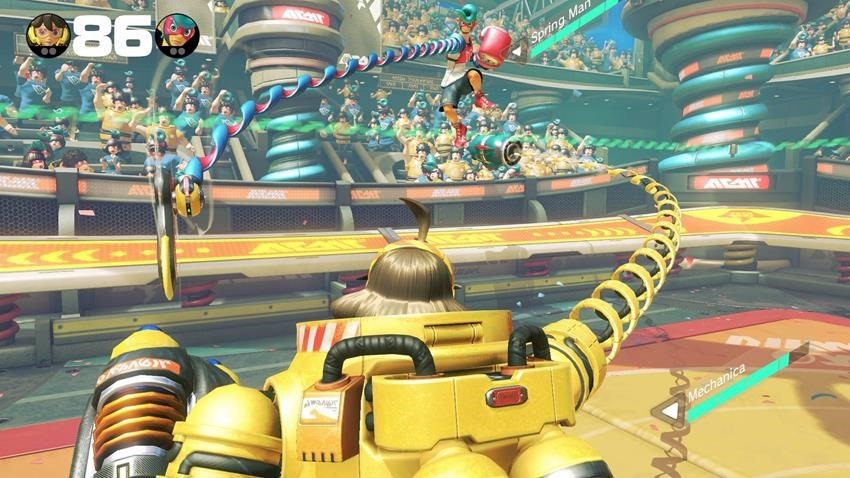




















Alien Emperor Trevor
June 9, 2017 at 13:14
So it’s like everyone’s the stretchy guy from SF?
Original Heretic
June 9, 2017 at 13:26
Without the “uga-FIRE” parts.
Matthew Figueira
June 9, 2017 at 13:44
THIS ^
Matthew Figueira
June 9, 2017 at 13:45
Game is fuuuuuuuuun 🙂 I definitely prefer standard controllers!
This is based off like 30 minutes of game time XD don’t mind me!